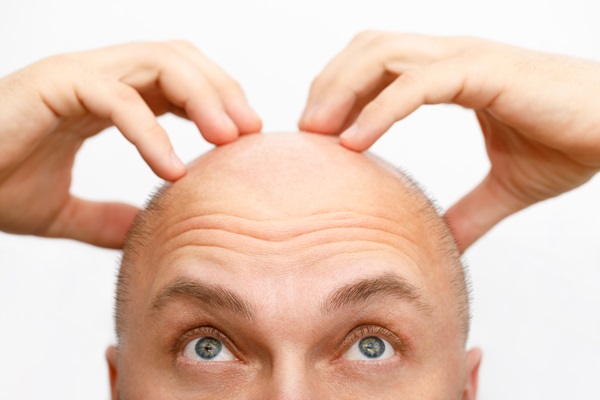Hair Transplant Procedure FAQs

A hair transplant is a surgical procedure that involves the removal of hair follicles in an area of the head where there is an excess (known as the “donor site”) and the placement of those hair follicles in an area where baldness has occurred (known as the “recipient site”). To help you make an informed decision about whether hair transplant treatment may be right for you, this review answers common questions about hair loss and the transplant procedure.
Frequently asked questions about a hair transplant procedure
The following are common questions that hair doctors receive about hair transplant procedures. Specifically, these questions address the causes of hair loss, the ideal candidate for a hair transplant procedure, and what you can expect before, during, and after the procedure. Of course, it is always best to discuss treatment with a hair professional in the office for more personalized answers and advice.
Who is a candidate for a hair transplant procedure?
A hair transplant procedure works best for individuals with pattern baldness, hair loss from scarring, or hair loss from cosmetic procedures or for those who wish to restore the full thickness of their hair. The hair doctor can help determine if a hair transplant will be beneficial during a consultation visit.
In general, there are no age limitations for a hair transplant procedure, and it is available for people in their 20s to those over the age of 70. That said, the patient should ideally have some hair on the back or sides of their head, as these are the ideal areas for donor sites.
What happens during a hair transplant procedure?
The first step in the hair transplant process is the removal of a small strip of scalp that contains healthy hair follicles from the back or sides of the patient’s head. This is referred to as the donor region. The area of the donor region is then closed, leaving only a fine line that is hidden by the rest of the patient’s natural hair.
The following steps include the division of the strip of hair follicles and the placement of the hair follicles where hair loss has occurred. Local anesthesia and IV sedation are commonly used to help ensure a comfortable experience. Multiple office visits are usually required to complete the hair transplant process. Each visit typically lasts for three to four hours.
What happens after a hair transplant procedure?
Patients can return to normal activities (including work) between 24 and 48 hours after the hair transplant procedure. Patients can and should wash their hair the morning after the procedure. However, it is encouraged to avoid physical activity for up to a week afterward to avoid sweating, irritation, and subsequent swelling.
Medications may also be provided to help minimize swelling and discomfort during recovery. Small scabs should go away within two weeks. There may be a minor itch while the scabs are there, and it is important to avoid scratching as much as possible. It can take up to a few months for all the numbness to go away around the donor region.
Are there any risks of a hair transplant procedure?
As is the case with all surgical procedures, there are a few risks with a hair transplant procedure, although most patients go through treatment without experiencing any notable complications. Risks of a hair transplant procedure include bleeding, excessive inflammation, and infection. These can be minimized by following the recommended aftercare plan provided by the hair doctor after the hair transplant procedure.
What results can I expect?
Most patients are satisfied with the results of their hair transplant procedure. The initial hair in the recipient site usually sheds within a few months. After this, new hair from the transplanted follicles should grow within six months after the procedure. From this point forward, the patient should enjoy hair that grows at an average and natural rate. Although results may vary, most patients can enjoy the benefits of their hair transplant procedure for a lifetime.
Are you considering a hair transplant?
A hair transplant procedure can restore your hair if you are experiencing pattern baldness or hair loss in general. To learn more about hair transplants and find out if getting one is right for you, contact us and schedule a consultation at a convenient time. During your first visit, we can discuss all available treatment options and put together a plan that works for you.
Get more information here: http://dillonhair.com or call Dillon Hair Restoration at (847) 241-2132
Check out what others are saying about our services on Yelp: Hair Transplant in Schaumburg, IL.
Recent Posts
Hair loss can usher in mixed emotions and damper your self-esteem, whether or not you were expecting the day. Fortunately, hair plugs or grafts can provide patients with a full head of their natural hair. If thinning or balding is something you are experiencing right now, help is available at our Schaumburg office. First, review…
Hair thinning treatments are far more versatile than they get credit for. Our team works closely with each patient to determine the root cause of their thinning tresses and craft an effective treatment plan. Take a closer look at common causes of hair thinning and the various methods we can use to treat it.Many factors…
Hair loss can significantly impact people, affecting their self-confidence and interpersonal relationships. Fortunately, hair grafting, also known as hair transplantation, provides a viable option to restore the natural hairline. If you are still deciding whether to pursue a hair graft, here are three reasons to consider it.Unlike temporary solutions like wigs or hairpieces, a hair…
For those with wrinkled skin, Botox® injections can provide great relief. While it may be a natural sign of aging, the presence of wrinkles can be frustrating to some. Thanks to the scientific research and testing in the 1990s by several dermatologists, Botox® was approved in 2002 by the Food and Drug Administration for cosmetic…


